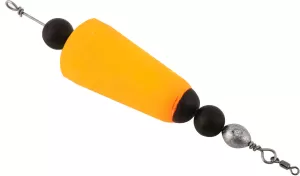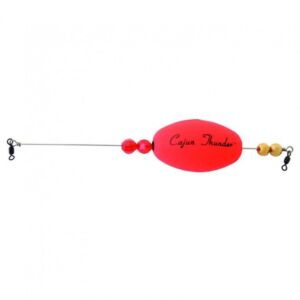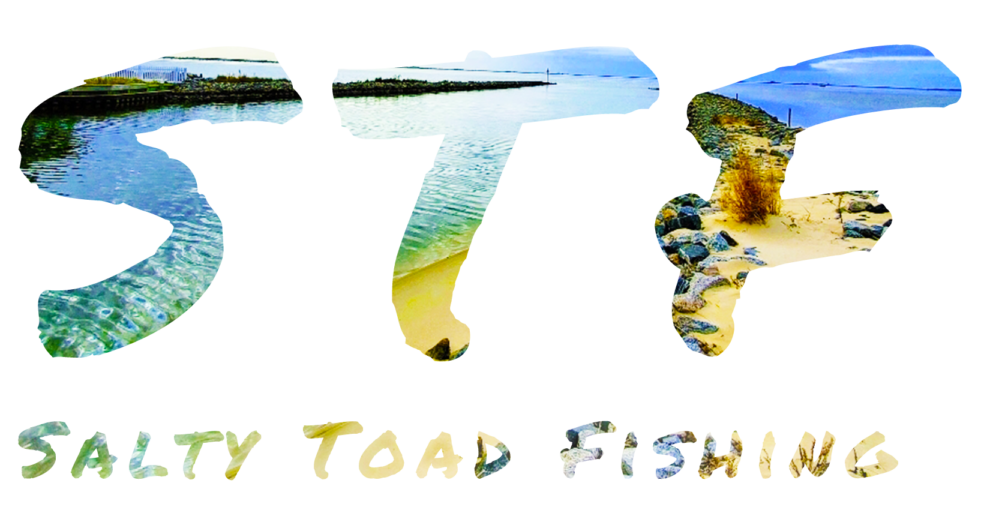Popping Corks:
Popping Corks are a widely versatile tactic used when fishing inshore for numerous different fish. In the article below, I will be comparing and explaining what corks are better for certain situations.
What Are Popping Corks?
Popping corks are one of the most commonly used tactics for inshore fishing. A popping cork is used like a normal bobber, with a bait or lure hanging below in the water, and the cork afloat on top. While in the water, you twitch or pull your line, causing your popping cork to cut through the surface creating a commotion. What this creates is a popping noise on the surface, often mimicking bait fish noises at the surface. While you pop your cork, this also causes your bait to bounce around below, giving it some action that may entice a bite. This ultimately leads to predator fish showing up to investigate, and seeing your bait near the splashing resulting in a strike. There are many different types and styles of popping corks that I will be breaking down below.
How To rig a popping cork:
Setting up a popping cork rig is relatively easy, but will vary depending on the conditions you’re fishing. You first want to start off by tying the top end of your cork directly to your main line. I usually just use an improved clinch knot for this. Once your cork is tied off to your main line, you then want to attach your leader to bottom of your cork. This is the line that will be in the water with your bait attached. Based on the depths of water you’re fishing, and where you would like your bait to sit in the water column will help determine the length you want your leader. Keep in mind, the longer the leader, the more difficult it will be to cast. I generally stick to roughly a 3′ leader for most corks. Once you have your leader line attached it is time to secure your bait of choice at the other end. One of the great things about popping corks is they work great for both artificial as well as live baits. Pairing your cork with an artificial shrimp, or preferably a live shrimp will work very well for most situations. You can also pair it with a large assortment of other artificial baits that would give off a good presentation as well. One of my favorite artificial baits to equip on my cork rig is the Z Man paddle tail, in the Slam Shady color. This combo has landed countless fish for me of all different species.
How Do The Conditions Affect Which Cork To Use?
Based on the current conditions you are fishing, different corks work better than others. When fishing clean water, fish are more likely to get spooked as opposed to fishing murkier water. Using a quieter, slower presentation with your cork would work best in these situations. Using a loud, chaotic cork may result in spooking the fish away from a possible strike. When the water is calm, you also don’t want to use a loud presentation. In calm water, a calmer, more subtle pop/splash will still get the attention of the fish you are targeting, while a loud splash on the surface may again spook them. This is opposite when fishing rough, murky conditions. When fishing dirty water, fish are relying more on other senses rather than sight to feed. A loud commotion on the surface of the water would get their attention bringing them to the area of your bait. Same thing applies with rough water conditions. If you’re using a more subtle approach with your cork in rough conditions, you are less likely to gather the attention of the fish. Rough conditions often produce the best when using a louder presentation with your cork, and making more of a ruckus on the surface.
Styles Of Popping Corks:
Popping corks come in many different styles. Some come with just the cork itself, while others have different beads, or attachments that create more noise when popped in the water. Some of the most common corks have a couple metal or plastic beads both on top, and bottom of the cork. When twitched these beads would jump back and forth on the cork creating a popping, or clicking noise. Again, these are great for mimicking bait fish in the area. A few of the most common popping corks used are, Cigar style; Cupped style; and Egg style. All of these styles have different situations that they excel in.
 Cigar Style:
Cigar Style:
A cigar style cork is a slim figured cork, most commonly used in cleaner water and calm conditions. This style does not create much noise on the surface, and is one of the more subtle approaches that can be used when fishing a popping cork. There are different variations of the cigar style cork, two of the more common styles being weighted and unweighted. Weighted has a small weight at the base of the cork causing it to stand upright immediately, while unweighted relies on the bait to fall and pull the bobber upright when it has reached its maximum depth. Weighted also allows for further casting, but if using a heavy bait, this can cause your bobber to sit at a lower level at the surface than wanted. With the slim presentation the Cigar cork entails, it is best used in calmer, clear waters. Pictured is a Cajun Thunder Cigar Style Cork.
 Cupped Style:
Cupped Style:
A cupped style cork has a wider figure than the cigar style, often tapered getting slimmer towards the bottom. At the top of this cork, it has a “cup”, or carved out area that creates a much louder splash on the surface. A cupped style cork is often seen with beads attached, being that these are most commonly used in dirtier water, and rougher conditions. These corks excel in those rough conditions, making much more noise than most other corks. Again, this allows you to gain the interest of a fish even in lesser conditions. Pictured is a Four Horseman Cupped Style Cork.
 Egg Style:
Egg Style:
An egg style cork is pretty much exactly what the name says. It is a cork in the shape of an egg, with a wider and more compact figure than other options. Egg style corks are great options when using a heavier bait, as they are bigger and easily able to stay afloat with the heavier bait attached. Egg corks make a fair amount of noise, especially when equipped with beads, so using these in murkier water conditions would be most ideal. Pictured is a Cajun Thunder Egg Style Cork.
Conclusion:
Popping corks are a very versatile option that can be used in almost any situation or condition out on the water. Throughout the article, I explained the differences between corks, and which cork works better for certain conditions. If you’re not familiar, or haven’t used popping corks much, you should definitely work on adding them to your arsenal, you will not be disappointed! Comment below and let us know your favorite baits to use under a popping cork!
Be sure to comment below and let us know some of your favorite baits and tactics when using popping corks on your own!

